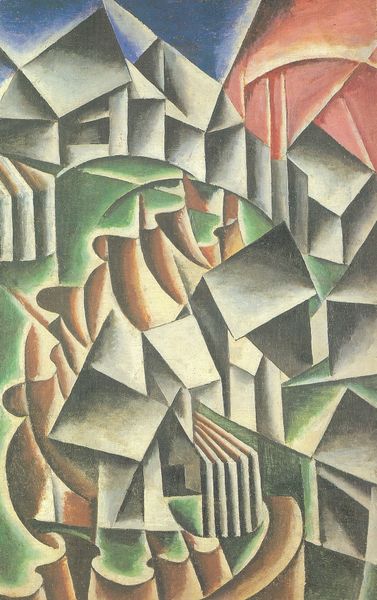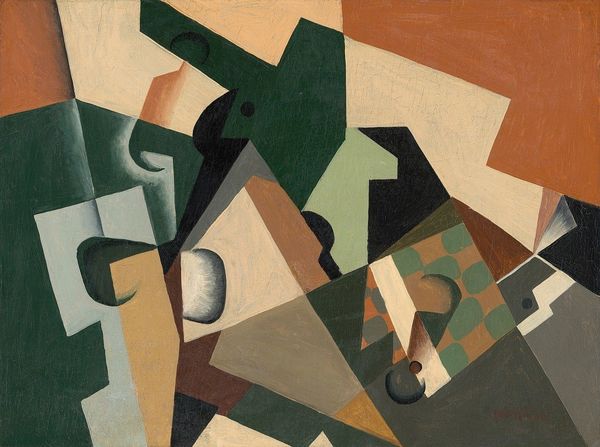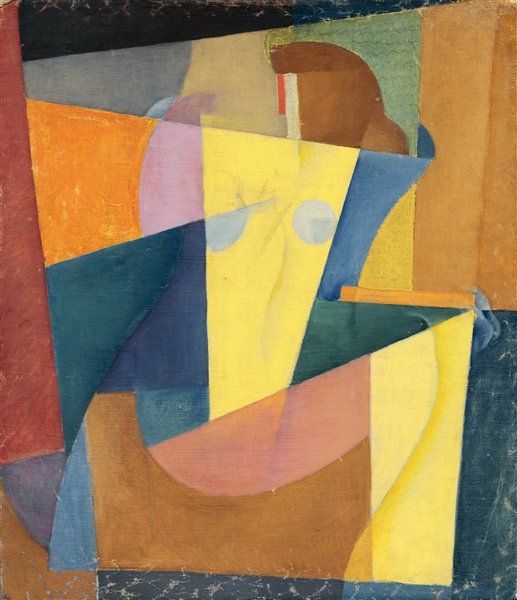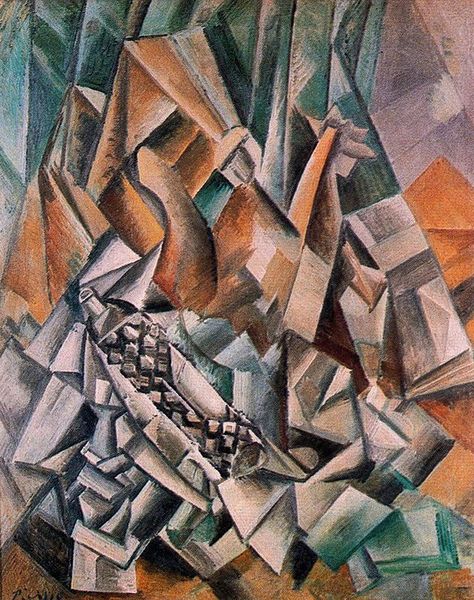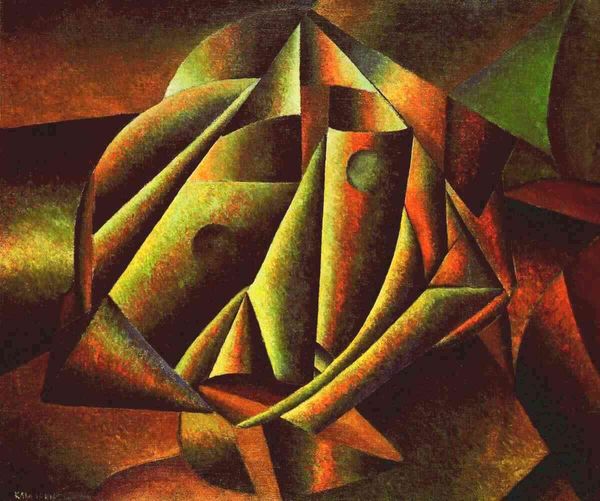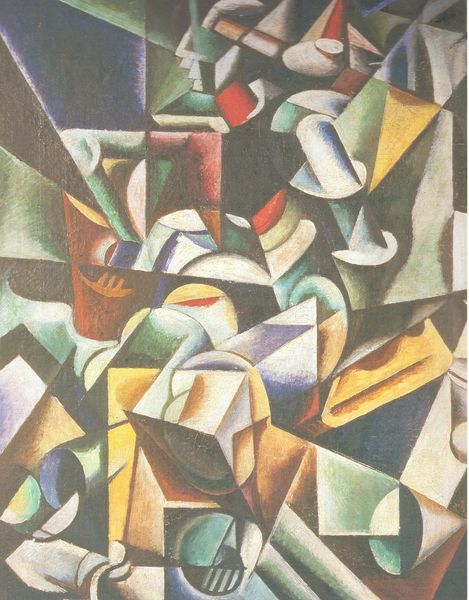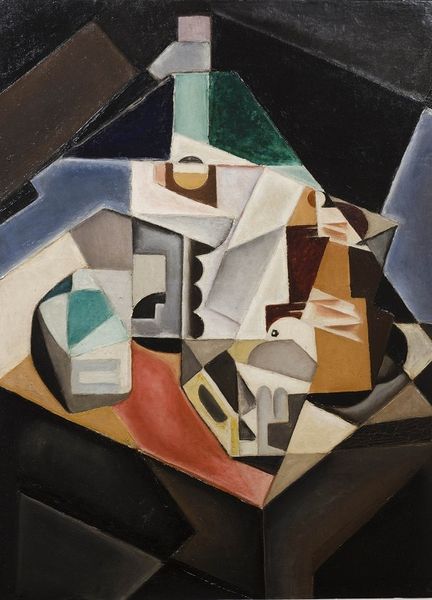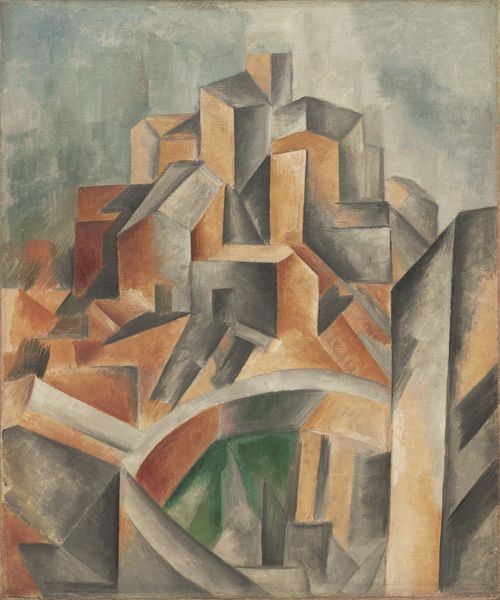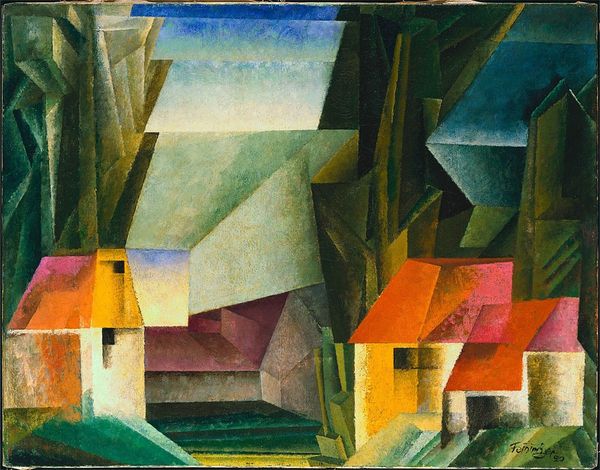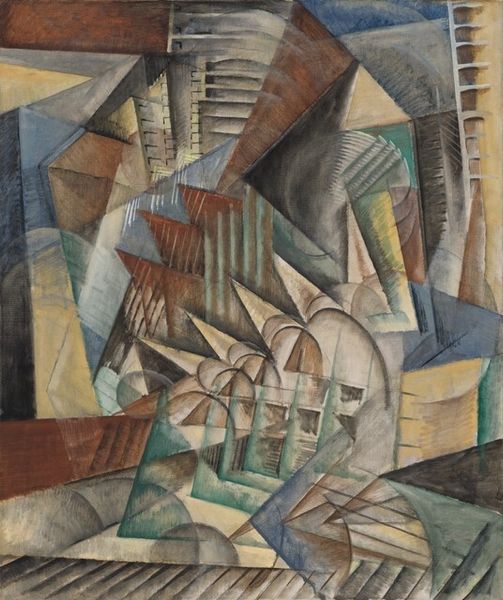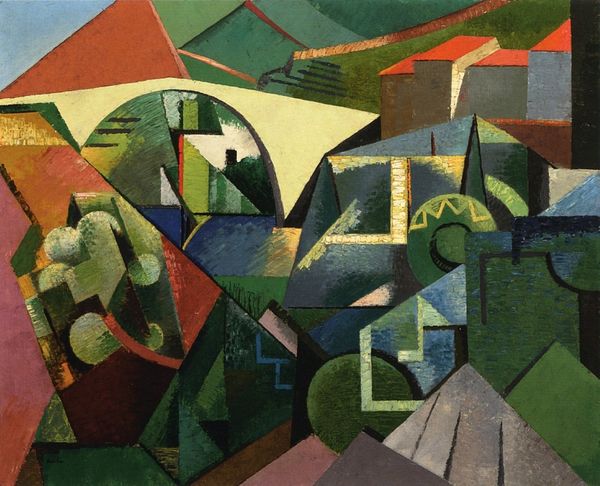
oil-paint
#
cubism
#
oil-paint
#
oil painting
#
geometric
#
expressionism
#
cityscape
#
modernism
Dimensions: overall: 121.9 x 99.1 cm (48 x 39 in.)
Copyright: National Gallery of Art: CC0 1.0
Curator: I am drawn to the geometry and light play. It makes me feel as though I am seeing light reflected on glass. Editor: That’s interesting! We’re looking at Lyonel Feininger’s “Street of Barns,” created in 1914. It’s an oil painting that blends cubist fragmentation with expressionist emotion. Curator: It definitely evokes that sense of fractured perspective—like reality has been shattered and reassembled into something… almost architectural. You said barns? I’m almost having trouble seeing that in this geometrical symphony. Editor: Absolutely. It really challenges the conventional notion of “cityscape” art. You see how Feininger abstracts these buildings, almost rendering them into crystalline structures. This isn't just about depicting buildings, is it? Curator: No, no, it’s about the feeling of buildings. The way light hits them, their essence…it’s all incredibly internalized. The hard lines have a surprising vulnerability about them. Like seeing a dreamscape filtered through sharp angles. What role did places like the Bauhaus play in fostering this type of vision? Editor: Feininger actually taught at the Bauhaus! Which tells us that it was an institutional and educational center for synthesizing modernism, cubism, and expressionism—allowing a unique geometric language and structure to the expressionist, emotional core. The goal of the art program was not necessarily abstraction in and of itself, but art's place in architecture, and vice-versa. Curator: So this street becomes more of a mental landscape, less about the tangible street and more about the interplay of the light on its facades and shadows cast, or its impression, as it pierces his memory… a study in emotion via angles and planes. Like he’s not just looking, but feeling the place. The colors here, the greens and browns... so earthy, almost muted—as though what one pictures after a big summer rain in the mountains. Editor: Yes. This artwork encapsulates the spirit of early modernism, right before World War I. An artist finding new ways to represent a changing world. Curator: Makes one consider what kind of new worlds are emerging around us today… And how they might eventually look back at all our angled feelings about it through one picture. Editor: Absolutely. There is no time better than the present to feel some angles.
Comments
No comments
Be the first to comment and join the conversation on the ultimate creative platform.

